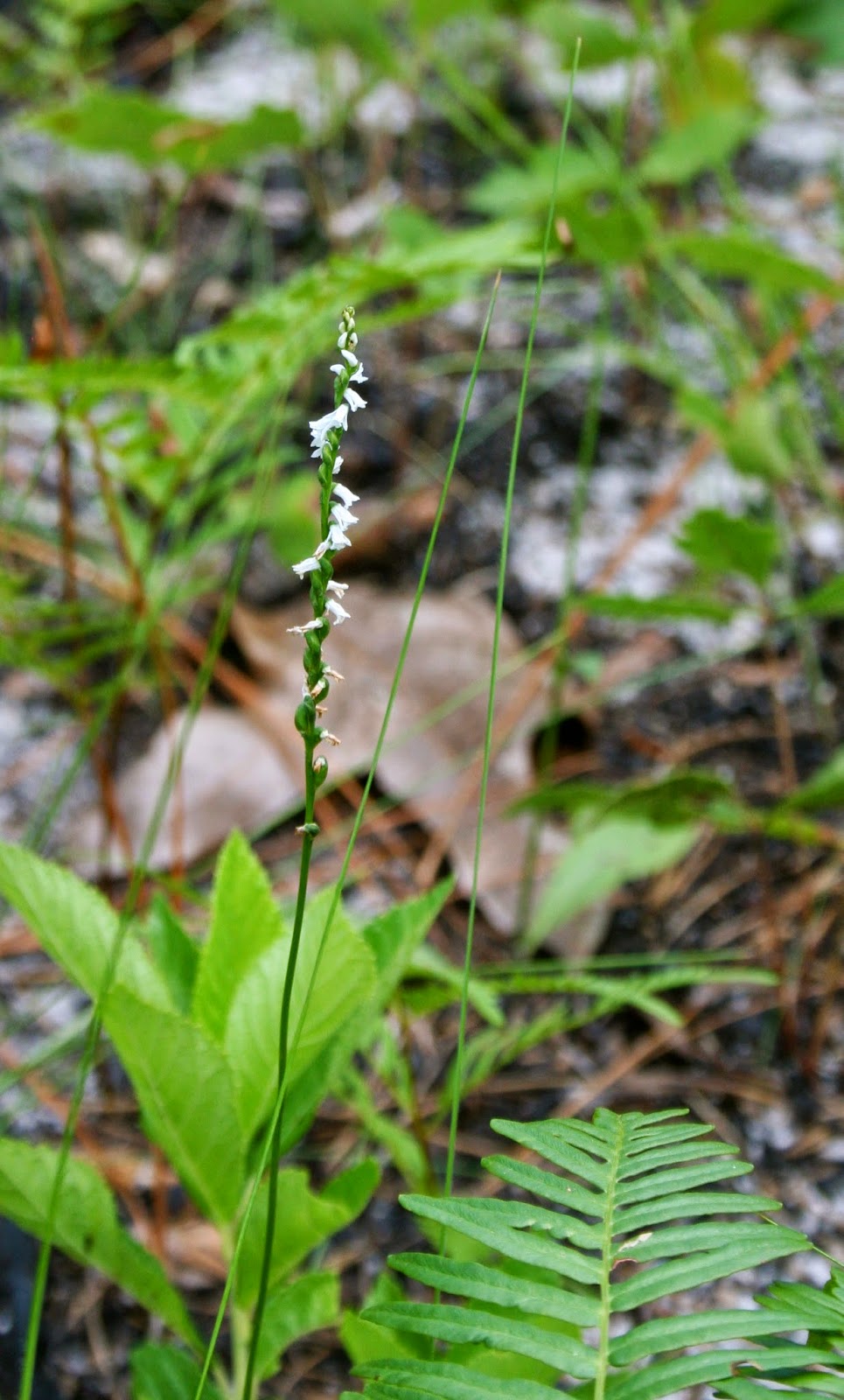Independence Day finds us smack dab in the middle of the Carolina Sandhills, standing in the heart of a recently burned stand of mature longleaf pines; the classic pine barrens, if you will. But as open and desolate as the forest understory appears, we soon find it anything but "barren."
All along the sandy ridgeline, tall leafless stalks of kidneyleaf rosinweed, Silphium sp., gently sway above a sparse bed of brownish-orange pine straw, their awkward yellow flowers looking far too small for their impressively large, lobed basal leaves, and gangly stalks, some rising 6 feet or more above the sand.
In the bright sunny patches created by the open canopy,
whorled-leaf coreopsis, Coreopsis major, make their own bold yellow statement.
Also known as great coreopsis, these middling sized members of the aster family have a pair of three lobed leaves arranged opposite each other, giving the appearance of a six-pointed star at regular intervals along their slender, erect stems.
whorled-leaf coreopsis, Coreopsis major, make their own bold yellow statement.
Also known as great coreopsis, these middling sized members of the aster family have a pair of three lobed leaves arranged opposite each other, giving the appearance of a six-pointed star at regular intervals along their slender, erect stems.
While both white meadow-beauty, Rhexia mariana var. exalbida, and Savannah meadow-beauty, Rhexia alifanus, rise from the ashes of this spring's burn,
the tall purplish-pink beauties we first met along the Pender County roadside a few weeks ago dominate this long leaf pine savannah, sparks of bright pink scattered all along the flanks of the sandy hills and persisting right down to the margins of the occasional boggy fern-filled seep.
Offering its own interpretation of the purplish-pink color theme, the aptly named Sandhill thistle, Cirsium repandum, greets us at every turn from its home in the coarse white sand.
Springs and seeps abound in this part of the wood, forming lush green oases between the sandy ridges. Swallowtails and other insects make their way amidst the verdant herbs and shrubs, already thick in the clear open spaces left by the recent cleansing fire.
This large slender red wasp paused in the warm sunshine before resuming its hunting.
Among the reeds, in the thick layer of organic material accumulated around the seep, lurks an insectivorous purple pitcher plant, Sarracenia purpuria.
This tiny individual is just beginning to emerge from the ashes, and hasn't yet developed the distinctive reddish-purple veins for which it is named.
A few feet higher, where the dense vegetation of the bog begins to thin out a bit, we spot another of North Carolina's native carnivorous plants, the sweet pitcher plant, Sarracenia rubra.
Also known as the redflower pitcher plant, the small trumpet-like containers formed by the leaves of this uncommon pitcher plant are filled with liquid into which the plant secretes digestive enzymes. When unfortunate insects find their way into the liquid, they are digested by the plant to supplement the nutrients obtained from the soil.
The hood, or lid-like projection at the top of the leaf, may serve to prevent dilution of the digestive fluids by rainwater as well as preventing trapped insects from escaping.
Mingled with the sweet pitcher plants, we discover more purple pitchers, replete with red veins and even a really cool blossom or two.
We traverse the boggy bottom via an old logging road, ankle deep in white sand,
which is lined with sun-loving flora like these savanna mountain-mint, Pycnanthemum flexuosum, imbibing the invigorating scent of a few crushed leaves as we continue our exploration.
Our old friend orange milkwort, Polygala lutea, grows in abundance here along the wetland margin,
and here we find a much larger colony of purple pitcher plants in full bloom, cozying up with the sphagnum moss alongside the dense jungle of ferns and cane and greenbrier and small shrubs around the spring.
The bright red veins highlight the short, stout vessels formed by the rolled leaves of these pitchers, and the ruffled margins of the rim are covered with wiry downward-angled bristles which help prevent captive insects from climbing out of the potent digestive brew within.
All of North Carolina's native carnivorous plants have suffered due to habitat loss and poaching by exotic plant collectors, but these remote Sandhills bogs on protected public lands offer some hope for the future of these remarkable creatures.
As we begin our homeward ascent back up the rolling pine pricked hills where our adventure began, we spy slender ladies tresses, Spiranthes gracilis, another of our native orchids, gracing the slope among the myriad grasses and ferns.
And just a bit further up the slope, we encounter humble butterfly pea, Clitoria mariana, admiring the dancing shadows of the ferns.
Tiny yellow pencil flower, Stylosanthes biflora, another legume with much smaller blossoms than butterfly pea, greets us from the base of burned out stump as we near our starting point.
Having thoroughly debunked the misnomer of pine "barrens" and immersed ourselves in the unique ecosystem of the longleaf pine barrens, replenished annually by fire,
we prepare to depart, but the charred debris and ancient sand and freshly fallen straw harbor one last surprise...
Not far from the vacant shell of a large land snail, keen-eyed Jay makes a remarkable find...
a pair of mysterious soot stained eggs perched upon the sand!
We decide to delay our departure in hopes of a glimpse of their absent guardian...
stay tuned.
























No comments:
Post a Comment